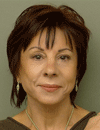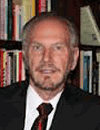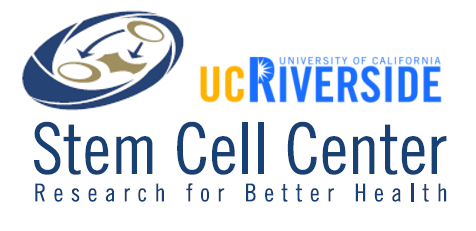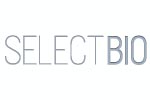08:00 | Morning Coffee and Networking |
|
Session Title: Adult Stem Cells, Stromal Vascular Fraction, and Other Cell Classes: Researcher, Clinician, and Regulatory Perspectives |
| |
|
Session Chairman: Richard Enmon, PhD JD |
| |
08:15 | 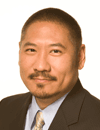 | Keynote Presentation ADSC and SVF: The Unlikely Suspects in Novel Immunotherapeutics
Allan Wu, Chief Scientific Officer, The Morrow Institute, United States of America
Great success has been achieved with dendritic cells (DC) and antigen presentation -based immunotherapeutics for cancer therapy. The rise of this novel cellular therapy has been validated and legitimated with recent FDA approval of Provenge for prostate cancer. Interestingly, Adult Mesenchymal Stem Cells are also capable of antigen presentation in addition to other cells found within SVF. A novel and patent pending method of rapid point-of-care autologous and personalized immunotherapy using the subjects' own SVF and tumor antigen is presented for the first time and exclusively at the Clinical Translation of Stem Cells Summit. Attendees will be offered a first glimpse at a profoundly new field, which patients and the adult stem cell and autologous community will greatly benefit from. |
|
09:00 | 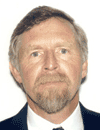 | Keynote Presentation Biomimetic Scaffolds for Adipose and Pluripotent Stem Cells
Dennis Clegg, Professor, University of California Santa Barbara, United States of America
|
|
09:45 | 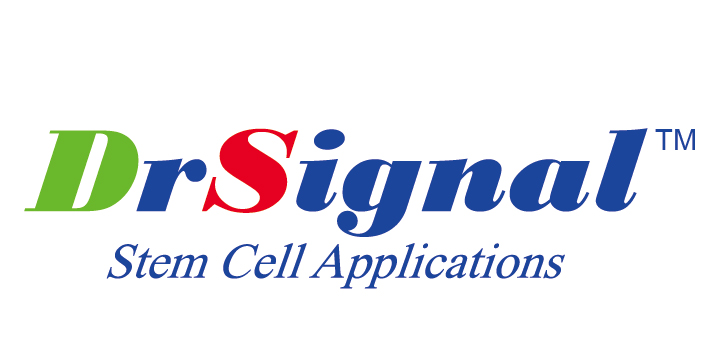 Technology Spotlight: Technology Spotlight:
Applications of Mesenchymal Stem Cells for Cosmetic Product Development and Translational Regenerative Medicine
Frank Mi, General Manager, DrSignal BioTechnology Co., Ltd. Taiwan
Mesenchymal stem cells (MSCs) are defined as undifferentiated cells that are capable of self-renewal and differentiation into several cell types such as chondrocyte, adipocyte, osteocyte, myocyte, hepatocyte, and neuron-like cells. Moreover, MSCs express several extracellular matrix (ECM) molecules such as collagen, fibronectin, laminin, and proteoglycans. Furthermore, MSCs can yield a series of cytokines and signal molecules that can suppress inflammatory responses such as IL-1 receptor antagonists and can upregulate anti-inflammatory cytokines such as IL-10 and IL-6. Unlike conventional skin care products can only slow down the aging process, biological formula (Bioliquid) derived from MSCs are able to stimulate cellular repair and regeneration. Compared to the other ingredients, Stem Cell Bioliquid with better absorption and penetration effect can revitalize skin by enhancing healthy cell proliferation and improving the rate of cell metabolism. The skin care products with the addition of Stem Cell Skin Bioliquid will be beneficial in obtaining the anti-aging effect equivalent to accept the top-level cosmetic rejuvenation medical treatment.
Our company – DrSignal also aims to accelerate the translation of laboratory research from stem cell and molecular biology into the clinical regenerative medicine. It is the first time that a novel injectable bio-graft which composed of MSCs (gingival stem cells and adipocyte stem cells), bone cement (calcium sulfate powder) and Stem Cell Bone Bioliquid, was developed for the applications of bone regeneration. In the animal model, we can engineer a scaled-up ossified tissue with features of a “bone organ,” including physiologically corticale bone, mature vasculature, and a hematopoietic compartment by using the injectable bio-graft. This work provides a model helpful for the applications of translational bone regeneration on the alveolar bone augmentation in dental implant surgery.
|
10:15 | Adipose Stem Cells: Molecular Identification for Metabolic Reprogramming
Shigeki Sugii, Group Leader, Singapore Bioimaging Consortium, Singapore
We have identified novel cell surface markers specific for adipose-derived stem cells (ASCs) from subcutaneous and visceral fat depots, which make distinct pathophysiological contributions. I will discuss the potential of using these markers for metabolic reprogramming studies: bioimaging, screening for phenotypic switch and improved adipocyte differentiation, or reprogramming into induced pluripotent stem (iPS) cells. |
10:45 | Coffee Break, Networking, Exhibit and Poster Viewing |
11:15 | Answering Questions About Obstacles, Especially Financial and Regulatory, to Evidence-Gathering for your Research to become a Standard of Care Practice
Fred Fox, Ethicist, BioMedical Research Institute -- BioMed IRB, United States of America
To start the presentation off, Fred Fox will present a "hypothetical" case study. If there are no specific questions from participants, then a survey set of questions will be posed and addressed by Mr. Fox, following the common elements for any stem cell research and development project.
The case study is loosely based on the elements from the real news report of an academic team, in China, using urine to collect cells and then induce stem cells later trained to be stem cells for a dental repair. [that news report is available from this link http://www.bbc.co.uk/news/health-23492425]. What are the obstacles in collecting cells, in the case study, from urine? What are the obstacles in GTP for storing, inducing stem cells and having a stem cell line for research and development, in general? Which obstacles are specific to using a patients own stem cells for any specific and near instant medical procedures? What other diagnostic or treatment obstacles should be addressed if missing teeth are to be replaced or, in a variation on the hypothetical case study, if patients are to bypassing "implants" with titanium screws for 3D-printed biomaterials seeded with stem cells to repair teeth in place.
What are the specific obstacles, especially financial or regulatory, to using induced stem cells in dental repair studies on the path of commercialization, from clinical investigations through a standard of care with reimbursement codes?
Questions from Delegates are Welcome.
|
11:45 | Panel Discussion Focusing on Regenerative Medicine Industry Trends
John Sterling, Editor-in-Chief, Genetic Engineering & Biotechnology News, United States of America
Panelists:
- Ingrid Caras, PhD, California Institute of Regenerative Medicine (CIRM)
- Allan Wu, MD, Regenerative Surgery Institute
- Dennis Clegg, PhD, University of California-Santa Barbara
- Sicco Popma, PhD, Janssen R&D/Johnson & Johnson
- Ron Shane, PhD, Research Scholar-UCSD
|
12:30 | Lunch, Networking, Meet the Exhibitors, and View Posters |
13:30 |  Technology Spotlight: Technology Spotlight:
Better Manufacturing Practice for Cell Therapies
Ken Rando, Sales Representative, Biospherix Ltd
The Xvivo System Barrier Isolator reduces risk and provides superior process control for the culture, processing, and expansion of cell-based therapeutics. Total isolation protects the cells from possible contamination, the people from viral vectors,…as well as allow for the optimization of the cell environment. Superior process control results in a higher quality cell product and more consistent results for your entire protocol. The BioSpherix GMP system provides a seamless transition from pre-clinical to clinical production of cell based products at a fraction of the cost of a cleanroom.
|
|
Session Title: Emerging Themes, Challenges, and Patenting: The Clinical Translation of Stem Cells |
| |
|
Session Chair: Barbara Krutchkoff |
| |
14:00 | The Stem Cell Controversy In Intellectual Property In Europe
Richard Enmon, US and EU Registered Patent Attorney, Vossius and Partner, Germany
Stem cell based technology offers unique opportunities for potentially life-changing therapies, but nevertheless remains one of the most controversial and vigorously debated fields of scientific research. Patent rights have been developed to arguably protect and foster such scientific advancement, and, since their inception, have also explicitly rejected the protection of inventions based on unethical research, or research contrary to the ordre public. However, recent decisions by the Technical Boards of Appeal of the European Patent Office seem to indicate that rather than interpreting the implementing provisions narrowly as proscribed, the definition of patentable subject matter is being swayed by the changing popular opinions of various member countries as reflected in their high-court decisions. This presentation seeks to provide an overview of the changing positions taken by national and international bodies with respect to stem cell technology and its impact on the potential for future patent protections. |
14:30 | Cutting Edge Concepts in the Use of Stem Cells and PRP Injections in an Office Setting
Joseph Purita, Medical Director of Stem Cell Centers of America, Institute Of Regenerative and Molecular Orthopedics, United States of America
The presentation concerns the use of PRP and Stem cell injections for treatment of musculoskeletal conditions. Our clinic has made extensive use of Platelet Rich Plasma in conjunction with Bone Marrow Stem Cells (BMAC) and Adipose Stem Cells (SVF) and fat grafts. All of these components are harvested from the patient, minimally manipulated, and utilized the same day. Indications are given as to which type of cell and technique to use to accomplish repair. For instance stem cells, both bone marrow derived (BMAC) and fat stem cells, are typically used for the more difficult problems such as osteoarthritis of the joints. While PRP injections are utilized for the less severe tendon problems. Discussed are the indications of when to use Stem Cells verses PRP alone.
The newest concepts in stem cell regenerative science are presented. Important basic science aspects of both PRP and stem cell preparations are discussed. This presentation defines what constitutes a clinically effective PRP product including proper numbers of growth factors, Platelets, CD-34 stem cells and WBCs which play a significant role in the production of SDF-1a and SCF which are two growth factors which allow stem cells to migrate (homing) to areas of injury. Some new cutting edge concepts are also presented including Exosomes and their use. A onetime thought to be cellular debris, Exosomes are now poised to significantly change our concepts of stem cells from which they are produced. They are important vehicles for the transportation of growth factors. Further discussion centers on the clinical use of recombinant cytokines and interleukins to make up for deficiencies in the incipient PRP and Stem cell products. Finally discussion concerns the use of Blastomere Like Stem Cells which are found in many portions of the body and are thought to be totipotent. |
15:00 | Coffee Break, Networking, Exhibit and Poster Viewing |
15:30 | Image Guided Therapeutic Stem Cell Injections
John Feller, Medical Director, Desert Medical Imaging, United States of America
This lecture will review the components of using image guidance as part of a comprehensive stem cell therapy program including:
- Determine the target.
- Delivery of the stem cells to the target.
- Follow up for response to therapy.
|
16:00 | Percutaneous Lumbar Intradiscal Injection of Autologous Bone Marrow Concentrated Cells Significantly Reduces Discogenic Pain through 12 Months
Ken Pettine, Fellowship Trained Spine Surgeon, Premier Stem Cell Institute, United States of America
There are few non-surgical options for treating discogenic low back pain. Conservative therapy involves steroidal and non-steroidal injections, physical therapy, exercise, chiropractic treatments and systemic prescription pain relief, but usually doesn't provide durable pain relief. In this open label pilot study, twenty-six patients (median age 40 years; range 18-61) received autologous bone marrow concentrate (BMC) intra-discal injections (13 with one level, 13 with two levels injected). Pre-treatment Oswestry Disabilty Index (ODI) and Visual Analogue Scale (VAS) were performed to establish baseline pain scores (average 56.5 and 79.3, respectively). Cell analysis was performed on an aliquot of each patient's BMC. The average BMC comprised 121x10e6 TNC/mL including 3,019 CFU-F (synonymous with mesenchymal stem cells). The average ODI and VAS scores for 24/26 patients were reduced to 25.0 and 33.2 at 12 months (p?0.0001), respectively. Eight of 20 patients improved by one modified Pfirrmann grade, suggesting an improved hydration state in the disc. |
16:30 | Systemic Auspicious Modulation of Older Cell Lines in culture and in the Mouse Model as a Function of Cytokine Configurations from Non Autologous Stem Cell Sources
Ron Shane, Medical and Research Director, Millennia Concepts Biotech, LLC/American Academy of Anti-aging Medicine, United States of America
Intravenous injections of autologous stem cells have not demonstrated any efficacy in terms of reversing empirical parameters of aging. Moreover, this form of prophylaxis has only been mildly efficacious in terms of mitigating bodily inflammation and possibly reducing tissue degeneration. Distinctive kinds of stem cells can provide an opulent plethora of peptide matrices. There has not been any studies showing whether cytokine configurations could propitiously modify gene expression of older phenotypes. Recent studies, at the Burnham Institute, and Texas A & M have demonstrated that systemic injections of high concentrations of cytokine configurations can dramatically change the genome to where older treated phenotypes exhibit a MRNA profile more consistent with a younger untreated organism. Thus, the diverse array of undifferentiated progenitor cells may now be regarded as biological factories for a unique array of efficacious peptides to reeducate cellular homeostatic protein expression.
|
17:00 | Muse Cells Derived from Adipose Tissue: A New Perspective on the Clinical Potential of Adult Pluripotent Stem Cells
Gregorio Chazenbalk, Research Associate, Dept of Obstetrics and Gynecology, University of California-Los Angeles, United States of America
The gold standard human pluripotent stem cells, embryonic and induced pluripotent stem cells have self-renewal uncontrolled capacity which often materializes in teratoma formation. A novel population of human pluripotent stem cells derived from adipose tissue (AT), termed Multilineage Differentiating Stress Enduring (Muse) (Muse-AT cells) was recently introduced to the scientific community, offering a resolution to the teratogenesis issue that plague ES and iPS cells. Muse-AT have self-renew capacity in a controlled manner without forming teratomas when injected into immune-deficient mice. Muse-AT cells are obtained from lipoaspirate material without the need of genetic manipulation nor the use of cell sorting techniques. Muse-AT cells express classic pluripotency markers and differentiate into cells from the three embryonic germ layers both spontaneously and under media-specific induction. Muse-AT cells exist in a quiescent state under normal physiological circumstances within the cellular niche. Furthermore, Muse-AT cells may function according to a highly conserved cellular mechanism related to cell survival in response to severe cellular stress, as well as the functional regeneration of damaged tissues and amputated limbs in primitive species. Because lipoaspiration is a safe and non-invasive procedure and Muse-AT cell isolation requires a simple yet highly efficient purification technique, Muse-AT cells could provide an ideal source of pluripotent-like stem cells with the potential to have a critical impact on regenerative medicine and cell-based therapy. |
17:30 | Close of Main Conference. |
18:30 | Skin and Dermatological Applications of Stem Cells: LATE-BREAKING SESSION Presented by Leaders in the Field [Separate Registration Required]. Please Click "Dermatology" Tab on Website for Details. |
